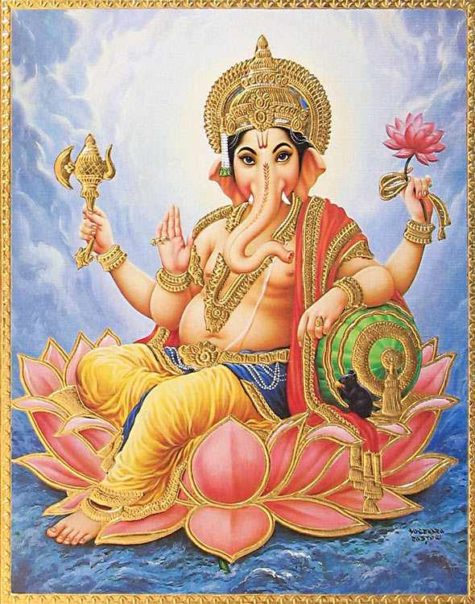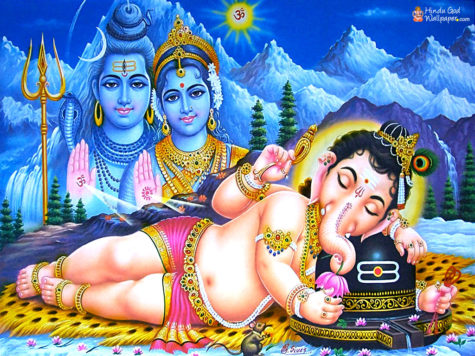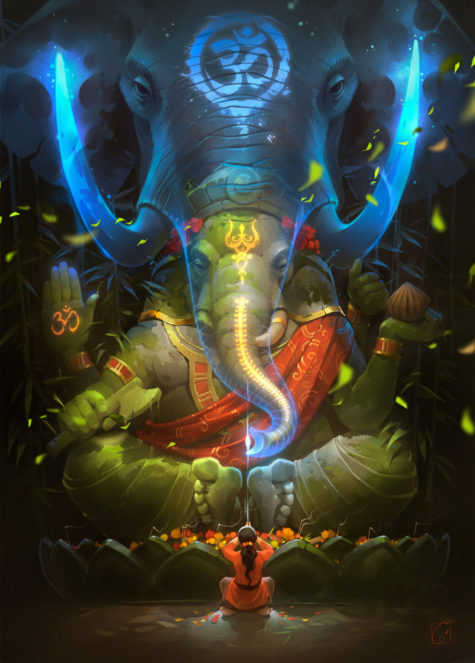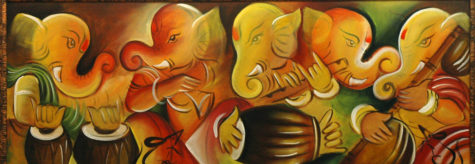Hindu Gods and Heroes
Elephant-headed Ganesha may be the most beloved deity of the modern Hindu pantheon; venerated by millions. He is invoked by Buddhists, Jains, and Neo-Pagans, too. He is benevolent and generous to all.
- Titles: Lord of New Beginnings; Lord of Obstacles; He Who Bestows Blessings
- Also known as: Ganapati
- Origin: India
- Color: White, Red, Pink
- Element: Water
- Numbers: 1, 3, 5
- Animals: Mouse, Snake
- Mount: Mouse
Lord of Beginnings, Ganesha’s blessings are sought before initiating any new enterprise. Ganesha is the Lord of Obstacles, removing but also creating them, sometimes from anger but sometimes just to attract further veneration. The flip-side of Ganesha is that he must be propitiated before new ventures lest he place obstacles in your path.
Ganesha bestows success, victory, prosperity, material comfort, romance, love, better six, and supernatural powers and skills to his devotees. He can block all these things, too, although he is unlikely to do so unless insulted and angered.
Ganesha is a generous, sympathetic spirit, quick to bestow favors. He is a trickster, but on behalf of his devotees and those he loves. Ganesha has a fast, volatile temper, but he calms down quickly too, and can be soothed and appeased. Just remember the old saying: “An elephant never forgets!”
- Ganesha is the first deity worshiped during Hindu rituals.
- His is the first image at the head of all processions.
- He is an indispensable component of all Hindu ceremonies except funeral rites.
In The Beginning
Historical evidence indicates that Ganesha was known as early as 1200 BCE, however surviving depictions are rare before the fourth century CE. He was incorporated into the Hindu pantheon comparatively late, in approximately the 5th century.
Ganesha is believed to have begun his incarnation as a pre-Aryan elephant spirit venerated by jungle tribes. In addition to this other gifts, he was invoked for protection from elephant herds.
He was absorbed into the Hindu pantheon as the son of Shiva and Parvati. Various myths explain why Ganesha has an elephant head. In one, Parvati creates her son from the scrapings of her own skin. Ganesha was born while Shiva was away long-term practicing austerities.
Ganesha is extremely close to his mother. When she asked him to guard her privacy in the bath, he took up his position at the door. This was the moment Shiva returned. Father and son didn’t know each other. Shiva wished to see Parviti; Ganesha refused to let him pass. Shiva beheaded him. Parvati came to see the source of the commotion and was distraught. Now comprehending the situation, Shiva revived Ganesha but was forced to find a new head. The first to be had was an elephant’s.
Petitioning Ganesha
Ganesha is lord of entrances, thresholds, and crossroads. Let him guard your door. It’s traditional to place his image above main entrance thresholds so that he is always encountered when entering.
Ganesha is happy to be venerated alongside other deities; however, never forget that he is the Lord of Beginnings. If you feed him, feed him first before any other spirits. There may be conflict if you venerate him alongside other spirits who also expect to be first served, for instance, Elegba.
- Ganesha heals physical, spiritual, and emotional ills.
- Ganesha has the power to liberate from the karma of past lives.
- He is invoked for children by the childless.
Petition him at a home altar or in a temple. Ganesha is the subject of a fertility ritual conducted at his temple in Madurai, India; allegedly if you bathe his image and circumambulate around it for forty-eight consecutive mornings, he will grant your wish for children.
Ganesha is a popular tantric deity, too. His trunk and single tusk are phallic symbols. Early Hindu texts suggest disapproval of Ganesha who was then associated with “orgiastic rituals.” He remains associated with Tantra among Buddhists. Ganesha communicates with devotees in dreams.
More information can be found at Loving Ganesha. Here are links to some of the individual posts:
- Ganesha Road Opener Ritual
- Ganesha Road Opener Oil Blend
- Making A Shrine To Ganesha
- The Ganesh Mantra
- The Ganesha Oracle
Favored People:
Ganesha will allegedly favor anyone who approaches him with a pure heart. He is the special patron of musicians who play the tabla and/or mridangam (percussion instruments), as well as authors, poets, and writers. In Thailand, Ganesha is considered patron of elephant trainers.
Manifestation:
Ganesha has an elephant’s head on a man’s pot-bellied body. He has one broken tusk. His skin usually has a rosy hue. His big ears signify his capacity to listen and hear. His forehead is marked with vermilion, indicating his tendency to involve himself in issues associated with women and his generosity toward female devotees.
Iconography:
There are countless images of Ganesha sitting, standing, dancing, or riding his mouse. Once you know what he looks like, he’s very recognizable.
Realm:
Ganesha’s home is a celestial realm called the Abode of Bliss (Svaanda Dhama). He lives in a marvelous palace surrounded by a forest of wish-fulfilling trees and an ocean of sugarcane juice.
Offerings:
Ganesha is easy to please, but he cannot be fooled. He will accept the most modest offerings but only if given with sincere intent and devotion. His favorite offering is said to be modaka, a type of sweet rice or wheat cake. Here’s a recipe: Recipe For Modaka. Allegedly the more modaka you give him, the more inclined his is to work on your behalf. Ganesha also accepts peanuts; fruits, especially bananas; sweets, candy, and sugarcane.
Source: The Encyclopedia of Spirits






